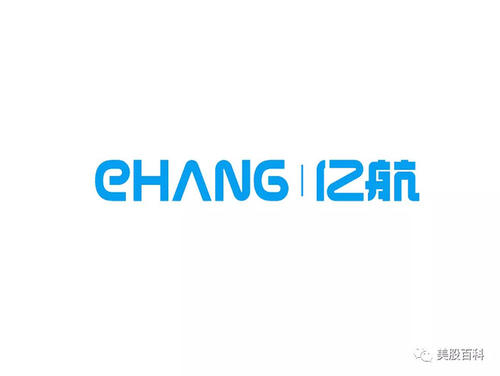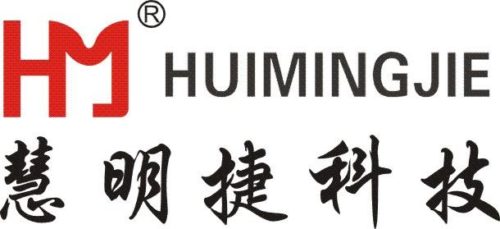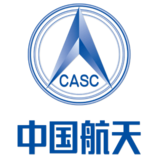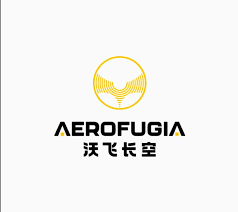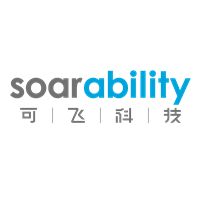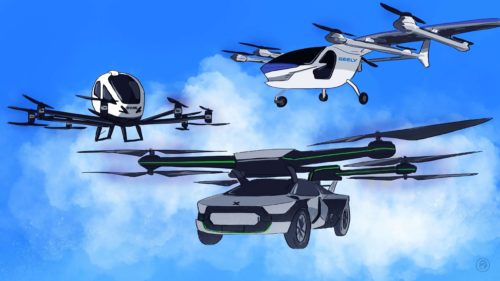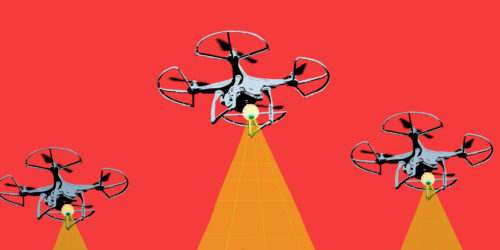All the drone companies in China — a guide to the 22 top players in the Chinese UAV industry
China makes most of the world’s non-military drones and most of those are made by one company: DJI. But The China Project has found a thriving industry of around 70,000 smaller players making drones, components, and software. Here are the most important players in an industry that is reshaping the 21st century.
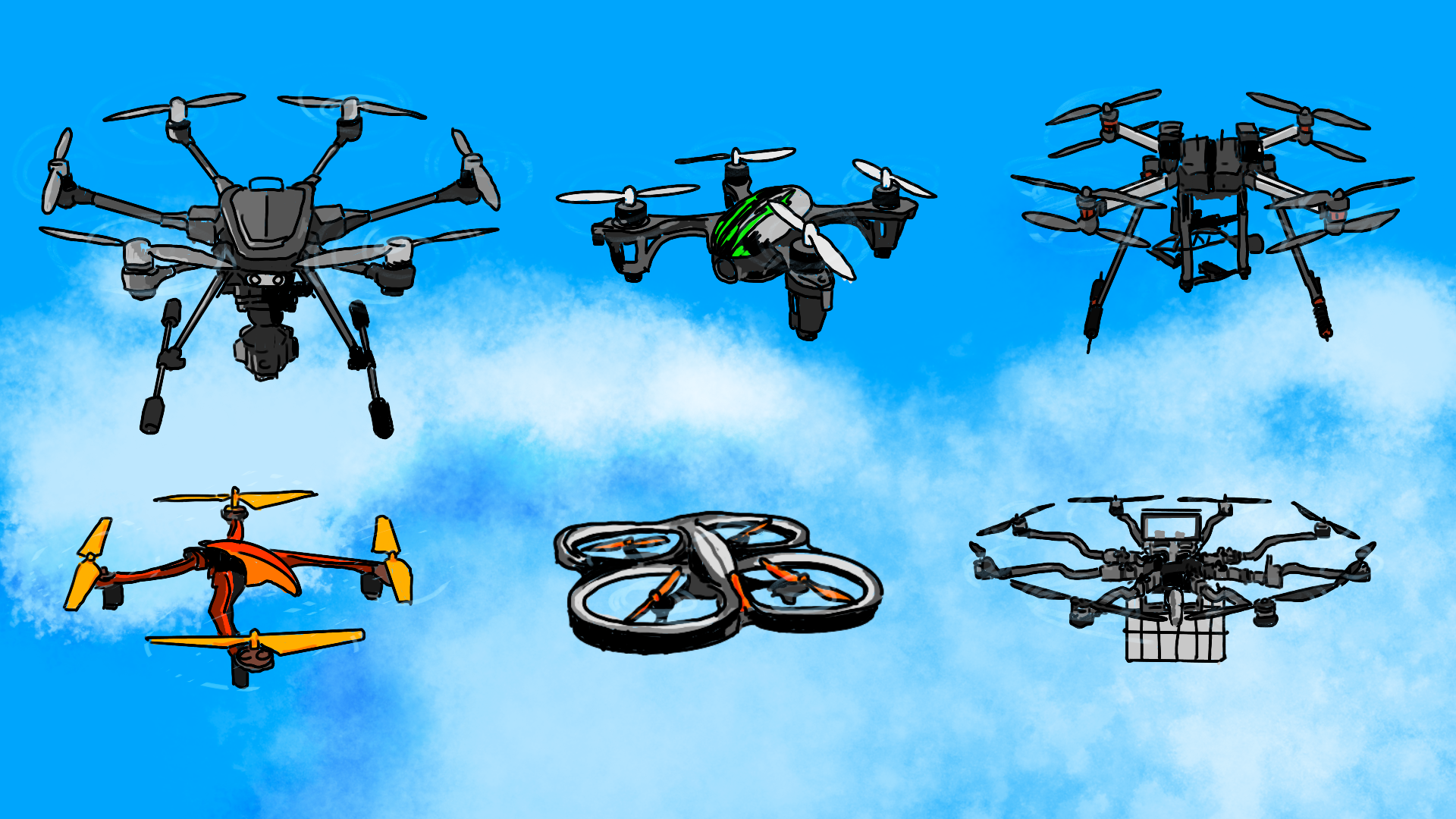
More than 80% of commercial drones in the world are made by Chinese companies, which created the industry: In the early 2000s, unmanned aerial vehicles (UAV) were used mostly by the military. The U.S. Predator, used in Afghanistan to search for Osama bin Laden, was what most people likely thought of when discussing drones. But in the 2010s, a flood of innovation and investor optimism transformed the drone into entertainment and photography for average consumers, and a useful tool for architects, builders, farmers, filmmakers, game rangers, and many other professionals. Drone applications now range widely from aerial photography and ecommerce deliveries to power line inspection and surveillance. China is the center of this drone boom: Industry estimates place the number of registered companies involved in the drone business at 70,000.
Shenzhen-based DJI commands 70% of the world’s consumer drone market alone. But as the market continues to grow, more players will undoubtedly enter. In 2017, China produced 2.9 million consumer drones, according to the Shenzhen UAV Industry Association, a rise of 67% year-on-year. China’s drone industry was valued at $67 billion in 2020, up 16% from 2019.
DJI’s dominance of the consumer segment has forced the thousands of other drone manufacturers in China to fight for survival in the wilderness of commercial applications. The result is a flourishing and highly creative industry sector. Partnerships with various institutions — law enforcement, advertising agencies, energy companies, governments, the military, and technology companies — are now standard among drone companies. More than any other country, the drone is latching itself onto the very fabric of China’s economy: Ecommerce giant JD.com, China’s second-largest online retailer, for example, is already integrating its drones with its delivery networks to cover 100 rural villages. (In the U.S., Amazon’s own drone program, known as “Prime Air,” is still in its early testing phase.)
China is also a major player in the global military drone trade. Over the past decade, it has delivered 220 armed drones to 16 countries, including Nigeria, Egypt, Saudi Arabia, and the United Arab Emirates, according to the research institute Sipri. China remains fifth behind the U.S. in overall arms exports, but it has become the go-to drone dealer for the world.
Chinese military drones are produced by state-owned companies, in contrast to consumer drones, whose producers are almost all privately funded. But the government is increasingly involving itself in the commercial drone sector. It has opened airspace, known as Unmanned Civil Aviation Experimental Zones (UCAEZs), to commercial drone makers like EHang (Nasdaq: EH) — the only publicly listed drone company out of China — to test aerial tourism, aerial firefighting, search and rescue, and more. The government wants its drone industry to grow to $27 billion in total output by 2025.
So who are the players in the Chinese drone market? Utilizing Chinese-language sources, The China Project has compiled information on the most important drone companies in China. They include companies involved in drone R&D, drone manufacturing, military uses, and drone services and accessories. Applications are organized into the following categories:
- Military
- Entertainment
- Agriculture
- Public safety
- Disaster alleviation
- Firefighting and emergency response
- Aquaculture
- Photography
- Infrastructure management
- Forestry
- Environmental protection
- Smart city management
- Logistics
- Passenger transport
- Topographic analysis
- Drone accessories
List of Chinese drone makers
Roughly organized by application and size (click to jump to each entry; to jump back here, click on any logo):
- DJI
- High Great
- Shenzhen Damoda
- EHang
- Autoflight
- Huimingjie
- China Academy of Aerospace Aerodynamics (CAAA)
- Aviation Industry Corp. of China (AVIC)
- Geneinno
- Grepow
- Walkera
- INNNO
- Jincheng Aviation
- AEE
- Bitalltech
- Micromulticopter Aviation (MMC)
- Aerofugia
- Zingto
- Air Dwing
- Volitation
- Soarability
- Yuanmu Holding
We will continue to add to and correct this list as we find authoritative information. We welcome any tips for additional key information at editors@thechinaproject.com.
China news, weekly.
Sign up for The China Project’s weekly newsletter, our free roundup of the most important China stories.
DJI
- Applications: Photography, agriculture, forestry, public safety
- Partnerships: AirDwing
- Website: https://www.dji.com/mobile
DJI, or Dajiang Innovations (大疆创新 dàjiāng chuàngxīn), is China’s flagship drone maker. Headquartered in Shenzhen, the 15-year-old company makes remote-controlled quadcopters and commercial drones for applications in aerial photography, agriculture, forestry, and security. The $15 billion company controls 80% of the world’s commercial drone business and sells about $1 billion worth of drones to the U.S. every year.
DJI drones have been widely regarded as better than their U.S. counterparts. According to The Verge in 2017, they were “by far the most compact drone now available.” This explains why the company is a favorite of U.S. federal agencies, including the State Department, the FBI, the military, and the Department of the Interior. DJI also supplies more than 900 U.S. local and state law enforcement and emergency service agencies. In December 2020, DJI was added to a government entity list, which barred U.S.-based companies from exporting technology to the company. U.S. consumers could still purchase DJI. Later, an audit by the Pentagon in June found “no malicious code or intent” in two DJI drone models frequently used by the government.
In April 2021, DJI exhibited an intelligent driving system at the Shanghai Auto Show and revealed a separate division, DJI Automotive, which will focus on the EV sector.
Timeline:
- December 18, 2020 — U.S. government adds DJI to blacklist over ties to CCP / The Verge
- June 1, 2021 — Pentagon report clears DJI of “malicious code or intent” / The Hill
High Great
- Partnerships: Audi, Tencent, Baidu, JD.com, Nissan, BYD, UeSTC, Beihang University, CCTV, regional TV channels (source)
- Application: Entertainment
- Product highlights: Professional and consumer drones, light show services
- Website: http://www.hg-fly.com/en/
Founded in 2014, High Great (高巨创新 gāojù chuàngxīn) is known as one of the “Big Three” Chinese drone entertainment companies, along with EHang and Shenzhen Damoda Intelligent Control. With fleets of drones numbering in the thousands, High Great has performed over 1,000 light shows in more than 200 cities worldwide. Since 2017, High Great — which often teams up with another drone company, ZEROTECH — has been responsible for some of the most impressive drone shows in China and the world. Last June, High Great displayed a light show consisting of 2,100 drones for National Day, the founding of the People’s Republic of China. High Great has been hired by luxury car brands, universities, tech giants, and state TV.
Recently, High Great has been coordinating with state broadcaster China Central Television (CCTV) to stage activities leading up to the 100th centennial of the Chinese Communist Party on July 1, 2021. Using more than 3,000 drones, they displayed pivotal events in China’s Communist history, including the route of the Long March and an outline of the First National Congress of the Communist Party.
High Great’s website highlights its home base of Shenzhen as a key part of its success. The city has “not only given us easy access to UAV suppliers and raw materials,” the website reads, “but also brought us closer to the creative talent pool.”
Timeline:
- February 16, 2018 — High Great displays light show for CCTV Spring Festival Gala / 36Kr
- July 2019 — High Great displayed light show with 2,100 drones for National Day / Website
- February 9, 2019 — High Great puts on drone show for Chinese New Year / 36Kr
Shenzhen Damoda Intelligent Control Technology
- Partnerships: CCTV, BYD, Huawei, Genesis Motors (source)
- Application: Entertainment
- Product highlights: Professional and consumer drones, light show services
- Website: https://www.dmduav.com/
Founded in 2016, Shenzhen Damoda (深圳大漠大 shēnzhèn dàmòdà) is one of the “Big Three” drone light show companies in China alongside EHang and High Great. The company primarily offers its light shows for festivities, theme parks, advertising, and marketing. Last year, Damoda featured prominently in the most important festival in China: the nationally broadcasted CCTV Spring Festival Gala. It also appeared frequently in theme parks from Chimelong Paradise in Guangdong to Gubei Water Town in Beijing. The company claims it has completed a total of nearly 3,000 performances at parties, theme parks, and other attractions with no errors so far. It also partners with BYD and Huawei — two other Shenzhen-based companies — to offer aerial advertising.
In a light show last September, in Guangdong, Damoda broke the record for most simultaneous airborne unmanned aerial vehicles with a fleet of 3,051 drones. It broke its own record this year in March in a show that used 3,281 drones to display the car logo of South Korean car maker Genesis Motors, which was announcing its debut in the Chinese market.
Timeline:
- September 26, 2021 — Damoda breaks world record for most drones in light show in Guangdong / Shenzhen Damoda Drone Show on YouTube
- April 5, 2021 — Damoda helps create Genesis Motors logo, breaks record / Sohu
EHang (NASDAQ: EH)
- Investors: Zhenfund, GGV Capital, LeBox Capital, Microsoft Accelerator Beijing
- Application: Logistics, passenger transport, smart city management, entertainment
- Product highlight: Professional and consumer drones, light show services
- Website: https://www.ehang.com/
EHang (亿航 yìháng) is the first publicly traded passenger drone company with ambitions to become what CEO Hú Huázhì 胡华智 calls the “aerial Uber.” The Guangzhou-based company makes pilotless “electric vertical takeoff and landing” (eVTOL) aircrafts, akin to a multi-rotor helicopter powered by batteries. Along with its signature “robo taxi” or “air taxi” business, the company also offers drones for aerial photography and light shows.
Since its IPO in December 2019, EHang has cemented its industry maverick status with a string of autonomous aerial vehicle (AAVs) prototypes. In January, its first autonomous passenger aircraft, the EH216, successfully carried 36 passengers through a test zone in Guangdong. The company was valued at $6.8 billion in February. The CFO, Richard Liu, has said EHang plans to offer travel services as early as this year. The startup is not alone in its flying car ambitions. Other major players moving into the air taxi business include Airbus SE and Boeing Co., carmakers Hyundai, General Motors, and Stellantis NV, and tech companies Intel and Tencent, which led a $240 million investment round last year into Munich-based air taxi startup Lilium.
Its business ambitions, however, have been met with some skepticism. EHang’s share price tumbled 60% early this year after a short seller, Wolfpack Research, published a report questioning EHang’s sales relationships, technology, and regulatory approvals. Although its stock has rebounded following the successful testing of its EH216 type in Japan, EHang has yet to live up to profitability expectations. Regulatory hurdles, R&D costs, and lagging infrastructure present continued challenges for EHang going forward.
Timeline:
- January 8, 2021 — EH216 AAVs made passenger-carrying flights in Hengqin New Area / Twitter
- June 7, 2021 — EHang gets test flight approved in Japan / Caixin Global
AutoFlight
- Partnerships: Shanghai municipal government, Boundary.AI
- Application: Aerial survey, public safety, firefighting, logistics
- Product highlight: eVTOL drones
- Website: https://www.autoflight.com/
Founded in 2017, Autoflight (峰飞航空 ēngfēi hángkōng) is an industry-leading drone maker specializing in eVTOL (electric vertical takeoff and landing) drones. The founder, Tián Yú 田瑜, has been in the aviation industry for more than 20 years and has obtained more than 300 flight-related patents. The company’s CTO spun off their own drone software company specializing in AI tech for eVTOL called Boundary.AI, which has received seed funding from Sequoia Capital.
AutoFlight’s “Great White Shark” model, made with carbon fiber and purely electric, can carry 20 kilograms of load at an altitude of 5,000 meters for up to 600 kilometers; Autoflight recently tested it in the Taklamakan Desert.
Timeline:
- February 2018 — R&D center established in Germany / Website
- August 2019 — Shenzhen research center established / Website
- May 31, 2021 — Autoflight ramps up eVTOL business / Sina Finance
Huimingjie
- Partnerships: China Armed Police Frontier Defense Administration, Hunan Fire Brigade, Hubei Fire Brigade
- Application: Public safety, disaster alleviation, environmental protection, infrastructure management, military
- Product highlight: LTE networks, 4G/5G cloud image transfer, portable facial/license plate recognition, COFDM image transfer, frequency-based drone networks
- Website: http://www.hmjtx.com/
Formed in 2006, Shenzhen Huimingjie Technology, or Huimingjie (慧明捷 huìmíngjié) for short, is a drone company specializing in wireless communication and drone video transmission. The company’s 4G private network and high-definition image transmission through drones have been used in fields such as air defense, public security, military, customs security (anti-smuggling), urban management, forest fire prevention, environmental protection, security and emergency services, and others. The company claims to be “widely used in public security systems in multiple provinces,” along with customers in Southeast Asia. Huimingjie currently has more than 200 employees, 50% of which have technical backgrounds.
Timeline:
- 2008 — Huimingjie helped restore communications after the Wenchuan earthquake / Website
- 2010 — India, Iran, Korea branches established / Website
China Academy of Aerospace Aerodynamics
- Partnerships: People’s Liberation Army (PLA), subsidiary of China Aerospace Science and Technology Corporation (CASC)
- Application: Military
- Product highlight: Caihong-4 and Caihong-5 (combat drone)
- Website: http://english.spacechina.com/
Formerly known as Beijing Institute of Aerodynamics (BIA) or the 701st Institute of China Aerospace Science and Technology Corporation, China Academy of Aerospace Aerodynamics (CAAA) is a research and manufacturing center for missiles and rockets. CAAA was sanctioned by the United States on September 23, 2004, under the Iran Nonproliferation Act of 2000 for transferring technology related to nuclear proliferation to Iran starting in 1999. It is a subsidiary of China Aerospace Science and Technology Corporation (CASC), the state-owned rocket manufacturer and main contractor for the Chinese space program.
CAAA is responsible for making China’s most popular drone export: The fixed-wing Caihong-4 and Caihong-5 drones (also known as part of the “Rainbow series”) bear a striking resemblance to the American Predator drones, and have been sold to buyers in more than 14 countries, including Saudi Arabia, Iraq, the United Arab Emirates, Egypt, Pakistan, Myanmar, and Indonesia, due to their versatility, firepower, and relatively low cost. The company also manufactures the PW-1 and PW-2, which are derivatives of the Caihong-4 and Caihong-5.
Timeline:
- December 20, 2019 — CAAA sells Rainbow series to Middle East / SCMP
Aviation Industry Corp. of China (AVIC)
- Partnerships: People’s Liberation Army (PLA)
- Application: Military
- Product highlight: Wing Loong I and II (combat drone)
- Website: https://www.avic.com/en/
Founded in 2008, the Aviation Industry Corporation of China is the state-owned defense contractor and fighter jet supplier to the People’s Liberation Army (PLA). It is a conglomerate with over 100 subsidiaries, including 24 listed companies that specialize in manufacturing fighter jets, attack helicopters, transport, and surveillance planes. Its Wing Loong II combat drone — which bears a striking resemblance to the American Predator drone — has been sold to governments such as Nigeria, Egypt, Saudi Arabia, the United Arab Emirates, and Pakistan. The conglomerate employs more than 400,000 employees.
By 2011, Pakistan and the U.A.E. — which have a long tradition of buying arms from the U.S. — signed deals to buy the Caihong-3 and Wing Loong 1. Besides the Wing Loong I and II drones, some of the other well-known aircrafts manufactured in AVIC’s arsenal include the J-20, J-10, JF-17, and FC-31 fighters; the Y-20 and Y-9 transports; the Z-9, Z-10, Z-19, and Z-20 helicopters; the PL-5, PL-9, and TY-90 missiles; and the LS-6 bomb. The key AVIC machines in China’s PLA Air Force (PLAAF) include the J-20 stealth fighter and the Z-19E attack helicopter.
Timeline:
- May 18, 2021 — China’s combat drones push could spark a global arms race / Bloomberg
Geneinno
- Partnerships: DJI
- Application: Aquaculture, photography
- Product highlight: Poseidon I (underwater drone)
- Website: https://www.geneinno.com/
Shenzhen-based Geneinno (吉影 jíyǐng) is an underwater drone maker offering drones that can perform difficult tasks, including taking 4k resolution images deep underwater and in locales that are challenging or impossible for humans to reach. Geneinno has been popular in China among three groups: diving, fishing, and yacht hobbyists, who mainly use Geneinno for photography; industrial uses for aquaculture companies; and finally, marine biology education. Its flagship drone is the Poseidon I, which garnered the company millions in sales in 2017. Poseidon I can sink to depths of 120 meters and has a maximum battery life of five hours. The machine weighs six to seven kilograms and is priced at 8,000 yuan ($1,250). The Poseidon I is now available on Amazon.
Geneinno currently has a partnership with DJI’s North American distributor and seeks to expand its business in North America, Europe, Australia, and Southeast Asia.
Timeline:
- April 7, 2017 — Geneinno launches GeneROV, an underwater drone with HD camera / 36Kr
- January 31, 2018 — Geneinno raises 15 million yuan ($2.3 million) in Pre-A financing / 36Kr
- 2019 — Established sales partnerships in the US, Europe, Australia, Japan, and Korea / Website
Grepow
- Partnerships: Xiaomi, Energous, Swissloop, High Great, Digi-Key, Arrow (source)
- Applications: Drone accessories
- Product highlight: Customizable drone batteries
- Website: https://www.grepow.com/
Founded in 1998, Shenzhen Grepow Battery Co. (格瑞普 géruìpǔ) is one of China’s largest battery manufacturers and a leading designer of advanced rechargeable batteries. Grepow began supplying small batteries to miscellaneous overseas businesses, including electric toothbrushes and toy trucks. Since 2015, however, Grepow has shifted primarily to become a supplier of the drone industry, establishing the world’s first drone battery brand, TATTU. It operates four factories with around 3,000 employees, 200 of which are engaged in R&D. Grepow does not supply electric vehicles.
Timeline:
- 2014 — American branch established in San Francisco / Website
- 2016 — OHSAS 18001 certified / Website
Walkera
- Partnerships: Unknown
- Application: Agriculture, firefighting, infrastructure management, aerial survey, public safety
- Product highlight: Tianyan Voyager 4, Vitus (compact drone), Rodeo 110, Furious 215 (racer drone), ZHUN (firefighting)
- Website: https://www.walkera.com/
Founded in 1994, Guangzhou Walkera Technology (广州华科尔科技 guǎngzhōu huákēěr kējì) began as a manufacturer of remote-control helicopters. The company has now pivoted primarily toward the drone business beginning with micro aerial vehicles (MAV) or mini-drones. Walkera mini-drones were developed for commercial and consumer use, but have been used in military and law enforcement agencies as training for operating larger drones. Walkera also has a firefighting drone called ZHUN and race drones Rodeo 110 and Furious 215. The company claims to export to more than 100 countries and is heavily focused on technology with nearly half of its 500 staff members dedicated to R&D.
In April 2016, Walkera opened a division in the U.S. called UC Drone to offer drone management systems to U.S. customers. It also has another subsidiary in Europe.
Timeline:
- 2019 — Firefighting Drone-ZHUN test demo in desert / Website
INNNO
- Partnerships: PetroChina Southwest, China National Offshore Oil Corporation (CNOOC), Sinopec
- Application: Infrastructure management, environmental protection, public safety, logistics, passenger transport, firefighting, disaster alleviation
- Product highlight: Drones, operating systems, image processing software, remote control systems, field sensors
- Website: http://www.innno.net/
Founded in 2015, INNNO Technology (因诺科技 yīnnuò kējì) bills itself as a Swiss Army knife for industry pain points and is focused on the research and development of drones for industrial applications. In the energy sector, Xi’an-based INNNO drones inspect power lines and towers in a worker’s stead. They have partnerships with several energy companies in China, and list pipeline inspection as a main application of their drone technology. Recently, the Xianyang government contracted INNNO to monitor pedestrian body temperature using the ultraviolet sensors on its drones.
Timeline:
- February 6, 2021 — Xianyang government hires INNNO to monitor pedestrian body temperature using the ultraviolet sensors on drones / Website
Jincheng Aviation
- Partnerships: Universities, research institutes, military
- Application: Public safety, military, environmental protection, agriculture, forestry, infrastructure management, firefighting, aerial survey
- Product highlight: Unmanned firefighting helicopters
- Website: http://www.jsjcjt.com.cn/about/
Jiangsu-based Jincheng Aviation (锦城航空 jǐnchéng hángkōng) is a high-tech drone company that specializes in high-capacity payloads. Jincheng’s flagship drone models — boasting the ability to carry an industry record of up to 500 kilograms — have already been used in fire departments across China and in the military. Jincheng has more than 100 senior technical personnel, two academicians, more than 30 professors and engineers, and a R&D center in Beijing. It boasts close partnerships with universities and research institutes, 20 drone models, and more than 40 national patents.
Timeline:
- January 20, 2021 — Jincheng to debut at the Beijing UAV expo in June / 163
AEE
- Partnerships: Apple, Red Bull, SoftBank, Qualcomm, Airbus, China Telecom, China Mobile, China Poly Group, Huawei, Alibaba, China Airlines (source)
- Application: Public safety, firefighting, environmental protection, disaster alleviation, infrastructure management, smart city management, aerial survey, entertainment
- Product highlight: Wearable tech (selfie drones, sports cameras)
- Website: http://www.aee.com/
Founded in 1999, AEE (一电科技 yīdiàn kējì) has positioned itself as the GoPro of drones. With a wide range of gadgets ranging from foldable selfie drones to bodycams (it has extensive ties with law enforcement), Shenzhen-based AEE already has a significant international presence in the drone industry. AEE has eight sales centers worldwide (Los Angeles, Munich, Beijing, Shenzhen, Shanghai, Jiangsu, Hubei, and Sichuan) exporting to more than 50 countries. AEE products have been commonly sold to Europe, America, Australia, Japan, and many other global big-brand supermarket chains, and its law enforcement products have been widely used in Europe and America and other country agencies. Some of its major customers include Apple, Qualcomm, Red Bull, SoftBank, Media Market, Decathlon, and Airbus. AEE also offers drone intelligence services and solutions to China Telecom, China Mobile, China Poly Group, Huawei, Alibaba, China Airlines, and other domestic enterprises.
Timeline:
- May 15, 2017 — Seed round from Tsinghua X-labs and others / Tianyancha
- March 3, 2018 — Angel investment from Beijing Jingbei Investment and Cretrend Capital / Tianyancha
Bitalltech
- Partnerships: Military, various governments, law enforcement agencies
- Application: Military, infrastructure management, public safety, smart city management
- Product highlight: Rotary and fixed-wing VTOL drones, operating systems, accessories (cameras, batteries, speakers, etc), system solutions
- Website: http://www.bitalltech.com/
Bitalltech (理工全盛 lǐgōng quánshèng) is an anomaly in the burgeoning drone industry: while others are focused on making drones fly, Bitalltech specializes in shooting them down. Founded in 2016 and based in Beijing, Bitaltech specializes in drone defense systems. Armed with advanced gadgets such as electromagnetic monitors and data processors, Bitalltech has sold their anti-drone devices and system solutions to the military and a number of law enforcement agencies in China.
Timeline:
- May 15, 2017 — Seed round from Tsinghua X-labs and others / Tianyancha
- March 3, 2018 — Angel investment from Beijing Jingbei Investment and Cretrend Capital / Tianyancha
Micromulticopter Aviation (MMC)
- Partnerships: State Grid, Sinopec, firefighting agencies, Huawei, AVIC, China Aerospace Science and Technology
- Application: Public safety, infrastructure management, disaster alleviation, smart city management, aerial survey
- Product highlight: Rotary and fixed-wing VTOL drones, operating systems, accessories (cameras, batteries, speakers, etc), system solutions
- Website: http://www.mmcuav.cn/
Founded in 2010, Micromulticopter Aviation (科比航空 kēbǐ hángkōng) or MMC hopes to become the go-to drone company for any and all industry solutions. The Shenzhen-based company has been a leader in formulating international standards for drones.
According to its website, MMC claims to be the leading drone supplier to the State Grid of China, firefighting agencies, and Sinopec. It was selected as a “Future Star” by Chinese Enterprise Magazine and was found on a list of “Potential Unicorns in China” in 2020. MMC has distributors in India, Indonesia, Germany, Malaysia, North America, and Russia.
Timeline:
- April 24, 2015 — MMC completes 27 million yuan Series A / China venture
- August 30, 2016 — MMC completes 40 million yuan Series B / China venture
- November 27, 2017 — MMC completes 200 million yuan Pre-IPO round / Qiming
Aerofugia
- Partnerships: Subsidiary of Geely Technology
- Application: Smart city management, infrastructure management, disaster alleviation, public safety, forestry
- Product highlight: X-Chimera 25 UAV, Aoshi XC25 UAV
- Website: http://www.aerofugia.com/
Aerofugia (沃飞长空 wòfēi chángkōng) is a company formed out of a merger between Geely, the owner of Volvo, and U.S.-based flying car developer Terrafugia in 2017. The joint venture focuses on “general aviation,” which refers to all activities in civil aviation besides transportation, such as industrial agriculture, forestry, and fishing. The company hopes to make drones with the broadest set of applications possible. Aerofugia will operate under two brands: “Aoshi” and “Taili.” The company also has designs to enter the flying car market, but the venture is still in the R&D phase. Geely teased a drone + car package deal last year.
Timeline:
- September 17, 2020 — Volvo owner Geely announces the formation of Aerofugia / SCMP
Zingto
- Partnerships: PLA, Chinese Academy of Sciences, Computing Center of the Shandong Academy of Sciences, the Chongqing No. 497 Plant, various military industrial enterprises, military scientific research institutes and law enforcement units, Hebei Provincial Public Security Department, 54th Research Institute of China Electronics Technology Group Corporation
- Application: Public safety, disaster alleviation, agriculture, forestry, environmental protection
- Product highlight: Three-axis optoelectronic pods (durable smart camera pod for extreme conditions)
- Website: http://www.zingto.net/
Founded in 2015 with a registered capital of 20 million yuan ($3 million), Zingto (翔拓 xiángtà) is a drone and technology company focusing on industrial applications based out of Hebei Province. The company makes different types of fixed-wing and multi-rotor drones. Its three-axis optoelectronic pods are best sellers in the market for cameras on moving vehicles. The company has a number of patents and certifications, one of which allows it to sell Zinto’s products in the European Union. They have worked with several technical universities in China in order to advance drone R&D, and they have pronounced ties to the military and law enforcement.
Timeline:
- September 2015 — Zingto established in Hebei / Tianyancha
Air Dwing
- Partnerships: DJI, senseFly, UAVER, Pix4D, China Unicom (source)
- Application: Public safety, firefighting, environmental protection, agriculture
- Product highlight: System solutions, integrated cloud management
- Website: https://www.airdwing.com/
Founded in 2015, the fast-growing Air Dwing (大翼 dàyì) is quickly becoming to drone software what DJI is to drone hardware, primarily thanks to its proprietary cloud-based platform, KiteBeam. Air Dwing’s flagship management system integrates and processes drone, air traffic, and weather data to aid route planning and data analysis. The Shenzhen-based company works with drone partners, mainly DJI, to offer more sophisticated management tools for governments and industries that want to use a fleet of drones for various applications. In April, the small tech outfit made headlines when it won a contract to build a drone control system for the Guangdong Province fire and rescue brigade.
Timeline:
- April 26, 2021 — Air Dwing wins contract to support Guangdong fire and rescue brigade / 163
Volitation
- Partnerships: Police departments, Jiangsu and Zhejiang power grid, Beihang Innovation Research Institute, China North Industries Group Corporation, Shenzhou Aviation Armory (source)
- Application: Public safety, infrastructure management, agriculture, forestry, environmental protection, military, aerial survey
- Product highlight: Unicorn unmanned helicopter
- Website: http://www.tx-tech.cn/
Founded in 2015, Volitation (天峋 tiānxún) makes drones for a variety of industry applications. Launched by graduates of the Beijing University of Aeronautics and Astronautics, the company has filed 70 patents, 53 of which have already been authorized. Volitation has received approval from the Shanghai Air Force Command to run test flights out of Changzhou, Jiangsu Province.
Volitation product line runs the whole gamut of drone types: they include unmanned helicopters, multi-rotor, fixed-wing, and composite-wing drones. Applications include public safety, electric power inspection, forest fire prevention, agriculture and plant protection, pollution monitoring, and aerial surveys.
Valued at 300 million yuan ($46 million) in 2020 with Series B financing underway, Volitation has a main office in Beijing, a 3,000-square-meter factory in Xianghe, and a marketing and service office in Changzhou.
Timeline:
- 2015 — Volitation established / 163.com
- 2016 — Develops and mass produces Tianbat multi-rotor drone / 163.com
- 2017 — Partnership established with Jiangsu and Zhejiang power grids and various public security systems / 163.com
Soarability
- Partnerships: Sinopec, BP, University of Oxford
- Application: Environmental protection, infrastructure management, firefighting and emergency response, smart city management
- Product highlight: Sensors and detectors
- Website: https://www.soarability.tech/index
Founded in 2016, Soarability (可飞 kěfēi) is a drone company specializing in air pollution monitoring. Its flagship Sniffer4D v2 atmospheric monitoring system can provide detailed air pollution data within a focused perimeter. Soarability was founded by a team with extensive experience in sensor and electromechanical system development from the University of Auckland, New Zealand. They have received support from the Shenzhen government, which has policies dedicated to supporting entrepreneurial teams of high-talent Chinese returning from overseas. Soarability claims its sensors have helped industrial enterprises map out pollution around a plant; petrochemical companies analyze the air composition around oil and gas wells to improve inspection and safety; emergency rescue teams find toxic gases; and scientific research teams collect good air pollution data.
As of March 2021, Soarability claims to have served 700 top enterprises worldwide, reaching 27 countries on 6 continents and 34 provincial administrative regions in China. It has filed 22 invention patents, 8 utility model patents, and several international applications.
Timeline:
- August 29, 2016 — Soarability founded with a registered capital of 2 million yuan / Tianyancha
Yuanmu Holding
- Partnerships: Qingdao Doublestar
- Application: Agriculture
- Product highlight: Plant protection drones
- Website: http://www.ymszgroup.com/
Founded in 2019, Yuanmu Holding (远牧 yuǎnmù) is a drone company that specializes in various kinds of agricultural applications. The Shenzhen-based company seeks to build a holistic ecological platform for agricultural businesses with plant protection drones as its flagship product. The company continues to explore the intersection of drone innovation, AI, and agricultural empowerment and efficiency.
Timeline:
- March 13, 2019 — Yuanmu established in Shenzhen / Tianyancha
China news, weekly.
Sign up for The China Project’s weekly newsletter, our free roundup of the most important China stories.



